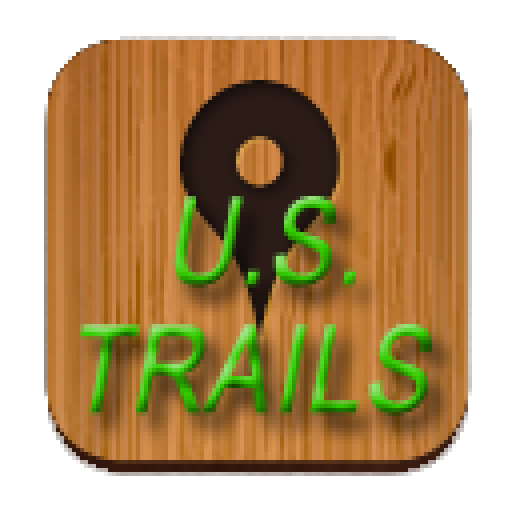Address:
Countie(s) trail is located in: Chippewa
Trail Type(s): Hiking <> Mountain Biking
Trail Measurement:
If you are at the trail and this trail needs the latitude and longitude please click the link below and add it to the Add/Edit Trail Form to give us the information.
Click to view your current location on a map.
The North Country National Scenic Trail (NCT) stretches approximately 4,600 miles (7,400 km) from Crown Point in eastern New York to Lake Sakakawea State Park in central North Dakota in the United States. Passing through the seven states of New York, Pennsylvania, Ohio, Michigan, Wisconsin, Minnesota, and North Dakota, it is the longest of the eleven National Scenic Trails authorized by Congress. Like its sister trails, it was designed to provide outdoor recreational opportunities in some of the America’s outstanding landscapes. As of early 2014, 2,730 miles (4,390┬¦km) have been completed.
The NCT is administered by the National Park Service, managed by federal, state, and local agencies, and built and maintained primarily by the volunteers of the North Country Trail Association (NCTA) and its partners. The 28 chapters of the NCTA, its 3,200+ members and each affiliate organization have assumed responsibility for trail construction and maintenance of a specific section of the NCT.
Route
The trail begins in northeast New York and proceeds to the western end of the state. It cuts across northwestern Pennsylvania, then follows a southwesterly course through the hilly region of southern Ohio until it nears Cincinnati when it runs north through western Ohio to the hills of SE Michigan. It continues from southeast Michigan through the western Lower Peninsula, crosses the Straits of Mackinac, and takes a northern route the length of the Upper Peninsula. After crossing northern Wisconsin, one leg follows the Lake Superior shore to the northeast corner of Minnesota before turning west, where it meets the other leg in central northern Minnesota. The trail enters southeast North Dakota, and continues to its other terminus in the center of the state.
The NCT connects more than 160 public land units, including parks, forests, scenic attractions, wildlife refuges, game areas, and historic sites. The list includes:
- Ten National Forest areas (Finger Lakes in New York, Allegheny in Pennsylvania, Wayne in Ohio, Manistee, Hiawatha, and Ottawa in Michigan, Chequamegon in Wisconsin, Superior and Chippewa in Minnesota and Sheyenne National Grassland in North Dakota)
- Four areas of the National Park Service (Michigan’s Pictured Rocks National Lakeshore, Wisconsin’s St. Croix National Scenic Riverway, New York’s Fort Stanwix National Monument, and Ohio’s Dayton Aviation Heritage National Historical Park)
Other federal facilities along the NCT include:
- Two National Wildlife Refuges (Minnesota’s Tamarac and North Dakota’s Audubon)
- Two Bureau of Reclamation projects (North Dakota’s Garrison Diversion Unit’s New Rockford and McCluskey Canals) and,
- Six Army Corps of Engineers impoundments (Baldhill Dam at Lake Ashtabula, North Dakota, Tom Jenkins Dam and Burr Oak Lake, William H. Harsha Lake [also known as East Fork Lake], Ohio, Tionesta Lake, the Kinzua Dam, and Allegheny Reservoir, Pennsylvania)
The NCT also threads its way through 57 state parks and state historic areas, 47 state forests, 22 state game areas, seven state water conservation districts and at least ten county forests and parks. Several hundred miles of trail eventually will also cross private land thanks to owners who have granted easements across their property.
The center point of the trail is located near the NCTA headquarters in Lowell, Michigan.
Though the eastern terminus of the North Country Trail is only a few miles from Vermont’s Long Trail and the Appalachian Trail, there is not yet a connecting trail to either of those trail systems. Efforts are under way to connect to the Appalachian Trail.
Existing and new sections of the NCT are generally limited to foot travel, including hiking, snowshoeing and cross-country skiing. Other non-motorized uses, such as bicycling and horseback riding are generally limited to areas specifically designed to withstand such use.
Stats
- Trail Measurement in Miles:
- Compass Latitude:
- Compass Longitude:
- Numeric Latitude:
- Numeric Longitude:
- Elevation in Meters:
- Elevation in Feet:
References and More Info
- Wikipedia
- National Park Service
- Compass Latitude:
- Compass Longitude:
- Numeric Latitude:
- Numeric Longitude:
- Elevation in Feet:
- Elevation in Meters:
- Trail Measurement:


Leave a Reply